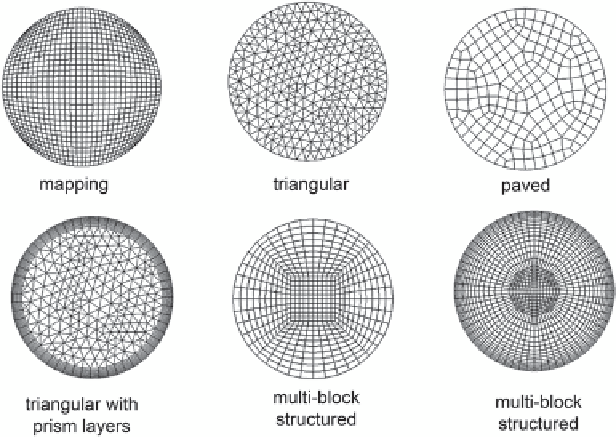Biomedical Engineering Reference
In-Depth Information
6.5.1
Flow in Blood Vessel Mesh
The nature of blood flow is inherently internal flow within circular pipes. Earlier
it was shown that applying structured mesh elements onto non-orthogonal shapes
required special treatment of the geometry. In particular the use of the O-block
multi-block strategy provided excellent matching of mesh elements on the curved
geometry. Figure
6.21
shows the different meshing patterns that are produced from
different meshing strategies. The results show that the mapping scheme fails with
highly skewed elements in local corners of the circle. The triangular and paved
scheme can match elements to can fit the circular shape but refinement in the near
wall region requires prism layers. The multiblock strategy can be used with a square
internal block or with greater resolution an octagonal shape in the centre, where
both allow prismatic layers in the near wall while maintaining near orthogonal ele-
ments throughout.
6.5.2
Blocking Strategies
Setting up the blocks to produce a structured mesh where possible can be difficult
to see at first, however with experience then this visualization can be attained. The
next section provides two examples in setting up the required blocks starting from a
single block (Fig.
6.22)
. The first example is a bend in the blood vessel is a common
feature found in the vasculature vessel network. Any curved bend and in particular
Fig. 6.21
Meshing outcomes using different mesh strategies on a cross-sectional slice of an artery
vessel

Search WWH ::

Custom Search